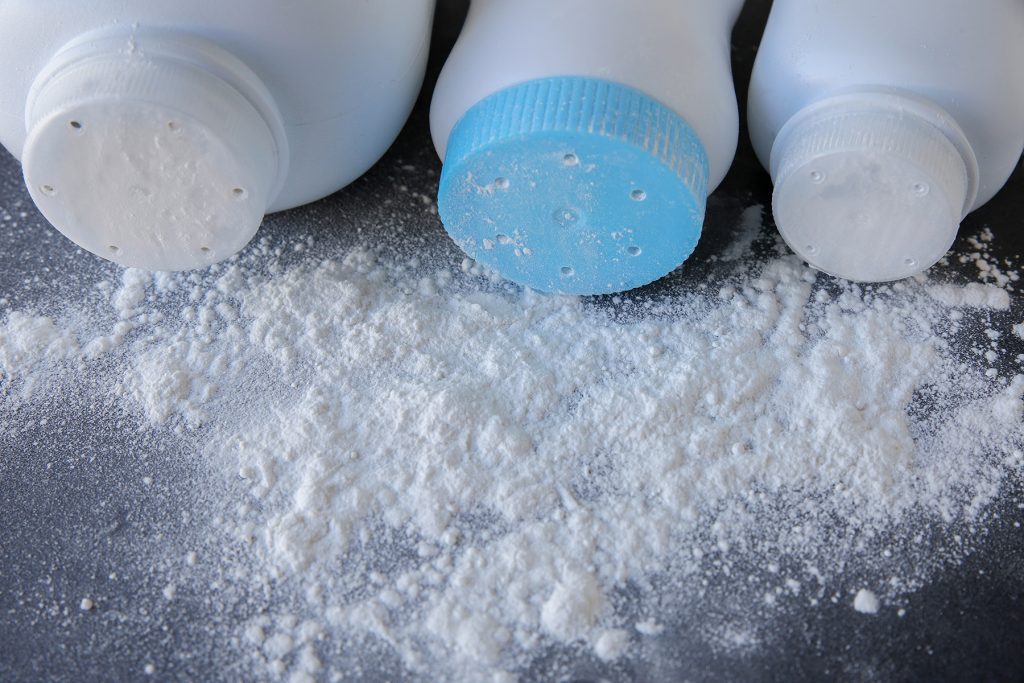
For years, Johnson & Johnson has been plagued with allegations that its famous baby powder causes ovarian cancer when it’s used in the genital area over long periods of time by women. While Johnson & Johnson has insisted its product is safe, juries across the United States have disagreed and have awarded large sums of money to female plaintiffs alleging that talcum powder caused their ovarian cancer.
In the largest award to date, a jury awarded $4.7 billion to 22 women and their family members in 2018 after plaintiffs’ lawyers and medical experts proved that the women developed ovarian cancer after “many years of using baby powder products as part of their daily feminine hygiene ritual.”
New Research, New Findings
Although some claims against Johnson & Johnson allege that its talc products contain asbestos, others allege that their ovarian cancer was caused by the talc itself. New research by doctors and scientists at Wayne State University shows evidence of a “potential mechanism for how talc triggers the cancerous changes. Their studies demonstrate how talc causes inflammation of ovarian cells that promotes cancer growth.”
The research team at Wayne State University “applied talcum powder to both normal ovarian cell lines and ovarian cancer cell lines, and in both cases, adding the talc created an oxidative state, which is a chemical imbalance that stresses cells and promotes malignant changes.” According to Nicole Fletcher, Ph.D., of the Department of Obstetrics and Gynecology at Wayne State University and her colleagues who co-authored the article for “Reproductive Sciences” online journal, “These findings are the first to confirm the cellular effect of talc and provide a molecular mechanism to previous reports linking genital use to increased ovarian cancer risk.”
The team of researchers at Wayne State also found that exposing the ovarian cells to talc increased the levels of CA-125, a protein tumor marker found in the blood. CA-125 blood tests are used to monitor a patient’s response to ovarian cancer treatment and sometimes used for early diagnosis of the disease.
Future Studies
One of the Wayne State University researchers, Ghassan Saed, has said the talc also caused transformative cellular changes in healthy fallopian tube tissues; researchers have believed that ovarian cancer may in fact start in the fallopian tubes. Saed told the online publication, Cancer Therapy Advisor, that his next study will involve injecting talcum powder into the reproductive systems of laboratory animals to see if the same changes occur. If those same changes do occur, it “might provide enough evidence to start warning the public not to use talcum powder.”
Groundbreaking Findings Attacked by J&J
This groundbreaking discovery comes at a time when Johnson & Johnson is facing over 14,000 product liability lawsuits alleging that talcum powder is defective and caused harm according to the Securities and Exchange Commission (SEC). Lawyers for Johnson & Johnson continue to try to discredit the findings of over a dozen medical experts shown to establish credible links between talcum powder and ovarian cancer.
In a May 2019 court filing, J&J attorneys fought to have Saed’s opinions excluded from evidence in pending talc multidistrict litigation in the United States District Court for the District of New Jersey arguing that Saed’s experiments were “riddled with errors and nonsensical results.” The lawyers also pointed out that Saed was a paid witness in the talcum powder legal proceedings, but all medical and research experts are paid for their testimony.
Johnson & Johnson continues to deny its talcum powder causes cancer and is appealing the verdicts.


Leave a Reply